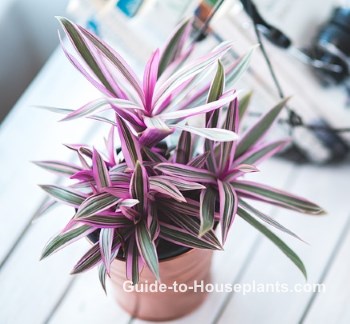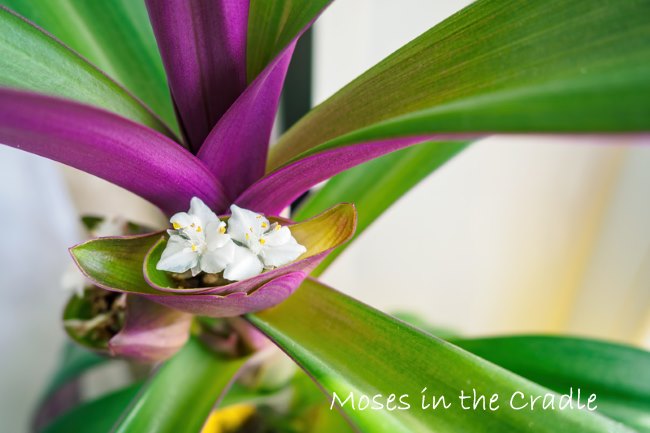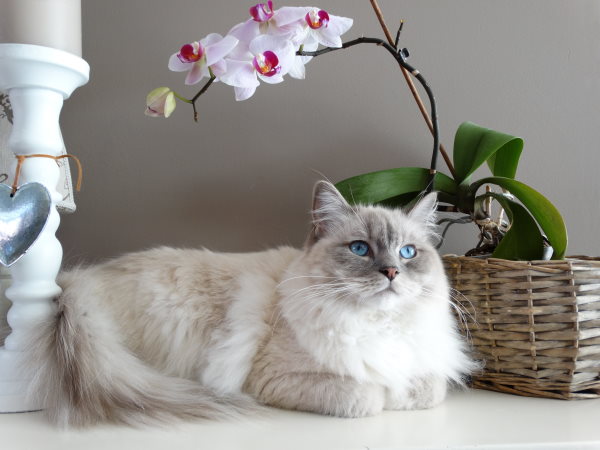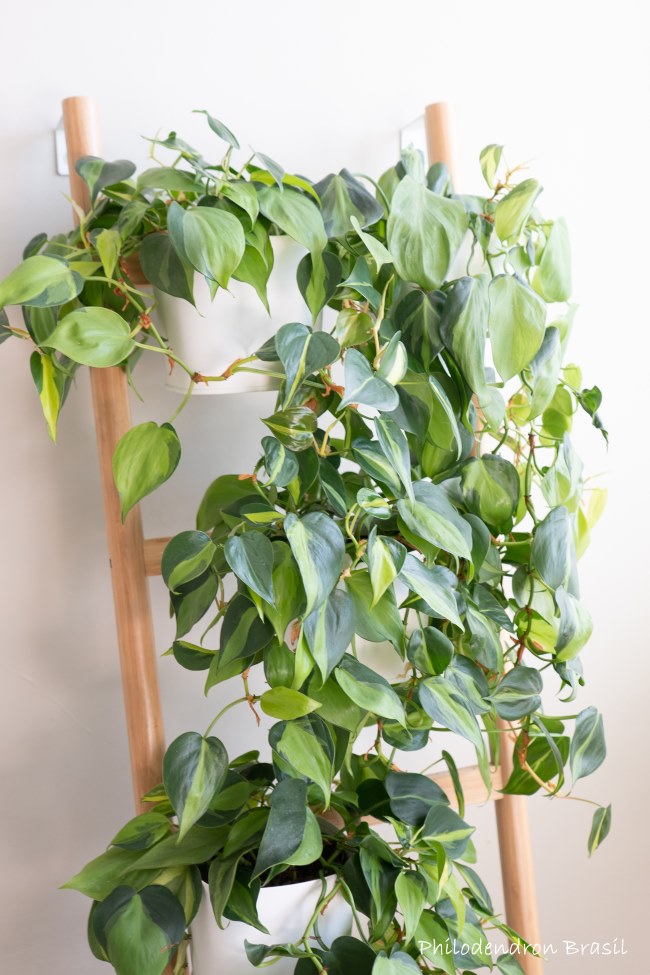Moses in the Cradle
Botanical Name: Tradescantia spathacea
Moses in the Cradle is a popular house plant, related to the Inch Plant. You'll find that it's just as easy to grow.
Dark-green, lance-shaped leaves with purplish-red undersides make this a beautiful house plant year-round. You can keep your plant indoors. But if you move it outdoors for the summer, keep it shaded from direct sun. Also, check the soil every couple days so that it doesn't dry out.

Pot it in a small decorative container for a stunning table accent. A newer variety, Rhoeo discolor 'Variegata' is even more spectacular, with striped foliage in burgundy, pink, green and cream.
About the Flowers (How Moses in the Cradle Got its Name)
Tradescantia spathacea blooms any time of year. Small, white, 3-petaled flowers grow in the leaf axils, nestled in boat-shaped bracts, giving this plant its common names, Moses in the Cradle, Moses in a Boat and Boat Lily.
 Flowers nestled in boat-shaped bracts give this plant its common name. Photo ©Zarifaufa
Flowers nestled in boat-shaped bracts give this plant its common name. Photo ©ZarifaufaMoses in the Cradle Problems, Solutions and Answers
No flowers? It's not getting enough sunlight. Grow your plant in bright, indirect light year-round to make it bloom.
Brown leaf tips are caused by dry air. Raise the humidity in winter by misting the foliage with tepid water daily, or using a cool-mist room humidifier. Or place the pot on a tray of wet pebbles to keep the air moist around it.
Repot in spring when the plant becomes crowded, probably every couple years. Move up to a pot only 1 size larger to give it a little room to grow. Use a pot with drainage holes to prevent soggy soil, which leads to root rot. Want to use a decorative pot without drainage holes? Use it as a cachepot. Slip a plain nursery pot with drainage holes into the cachepot. I use small rocks in the bottom of cachepots to keep the inner pot above the drainage water.
Something bugging your houseplant? Spider mites suck plant juices, leaving leaves pale, spotted and curled. Though you'll likely notice the webbing between leaves first -- the tell-tale sign of these destructive pests. Cut off any affected parts of the plant and treat with insecticidal soap immediately. Aphids may attack new growth of this plant, sucking plant juices and leaving a sticky residue on the leaves. Isolate any affected houseplant to prevent pests from moving on to nearby plants.
Is Tradescantia poisonous? Yes. According to the ASPCA, Tradescantia species are toxic to cats and dogs, and also cause skin irritation for many people. Keep this houseplant away from pets who may play with or chew on it. It's also a good idea to wear gloves when handling it.
Buying Tip
Tradescantia spathacea was formerly known as Rhoeo spathacea and is sometimes sold under that name in the nursery trade.
One cultivar, Rhoeo discolor 'Variegata' has grown in popularity and is highly sought-after.
You'll find Moses in the Cradle for sale from online nurseries and garden centers in spring and summer.
Moses in the Cradle Care Tips
Origin: Mexico
Height: 1-2 ft (30-60 cm)
Light: Grow your plant in bright, indirect light year-round for good foliage color and flowers. It will tolerate lower light levels, but the leaves will be more green than purple. Keep it out of hot, midday sun.
Water: Keep soil lightly moist spring through fall. In winter, allow the potting medium to dry out slightly between waterings. Soft, limp stems may be caused by over-watering, which can lead to root rot. Use a pot with drainage holes to prevent soggy soil.
Humidity: Moderate room (around 40% relative humidity). Indoor air can become extremely dry during the winter months, causing brown leaf tips on plants. It's a good idea to use a humidity monitor near your plants, rather than guess. Stand the pot on a humidity tray or use a cool-mist room humidifier near the plant.
Temperature: Average to warm room temperatures (65-80°F/18-27°C) suit this plant year-round. It will tolerate a minimum temperature of 55°F/13°C. Keep Tradescantia spathacea away from heat/AC vents, drafty doorways or windows -- it doesn't like fluctuating temperatures.
Soil: Good-quality, all-purpose houseplant potting mix.
Fertilizer: Feed monthly with a balanced, water-soluble houseplant fertilizer in spring and summer, while plant is actively growing.
Propagation: Division. Remove offshoots that grow around the plant with some roots attached and pot separately. Spring is the best time to propagate Moses in the Cradle because it is starting its most vigorous time of growth.


